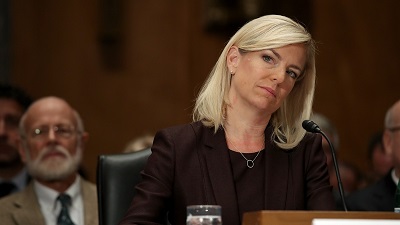Russians, Chinese and Non-State Enemies: Homeland Security Dept. to Host National Cybersecurity Summit
For nearly half of President Donald Trump’s service as America’s Commander in Chief, the Democratic Party has blamed Trump for conspiring with the Russian government to figuratively torpedo the Democratic Party’s presidential candidate Hillary Clinton.

As the criminal case slowly unfolds, there appears to have been a lapse in security measures to interdict “foreign enemy hackers” who often created mischief in cyberspace for the United States government and the nation’s business community. According to the National Association of Chiefs of Police, the hackers were successful in penetrating a number of U.S. government targets and it was done with the knowledge of then-President Barack Obama and his lax security team, as well as the FBI’s counterintelligence division (headed by controversial FBI assistant director, Peter Strzok
With so many incidents of Internet hacking perpetrated against the U.S., the U.S. Department of Homeland Security (DHS) will host a National Cybersecurity Summit on Tuesday, July 31, 2018 at the Alexander Hamilton U.S. Custom House in New York City, New York.
Officials at the Homeland Security Department — and its directorates such as Immigration and Customs Enforcement (ICE), the U.S. Border Patrol, the U.S. Customs Service, the Transportation Security Administration (TSA) and other law enforcement and military branches of the federal government — will meet with cybersecurity specialists so that the huge DHS has each of it’s numerous directorates and offshoots on the same page when it comes to securing the U.S. web system.
“It’s been almost 18-years since the 9-11 terrorist attack on New York City’s World Trade Center, Pentagon, and a third commercial passenger airliner that ended up crashing in an area far from its intended target when passengers intervened and attempted to forcibly gain control of the airliner’s cockpit and flight controls,” notes former police officer David Breckwood, who responded to the World Trade Center attack.

According to Secretary of DHS Kirstjen Nielsen, National Cybersecurity Summit is “expected to bring together a broad group of representatives from across government including officials from Department of Defense, National Security Agency, Federal Bureau of Investigation, Department of Energy, and Department of Treasury. They will be joined by academia and industry CEOs across sectors including telecom, financial, and energy to lay out a vision for a collective defense model to protect our nation’s critical infrastructure. Through panels, keynote addresses, and breakout sessions, the summit will serve as a launching point for a number of DHS initiatives to advance cybersecurity and critical infrastructure risk management.
“An interconnected world offers a myriad of benefits to American businesses and the public, but the innovations and conveniences of modern technology pose new and complex security challenges,” said Kirstjen M. Nielsen, Secretary of the Department of Homeland Security.
“With the majority of critical infrastructure owned and operated by the private sector, it is essential that we maintain strong partnerships between DHS and the private sector to underpin our collective defense against the evolving threats we all face. Because of our increasing hyper-connectivity, cybersecurity remains a shared responsibility; too big for anyone acting alone. This summit is another opportunity to gather our interagency and private partners and chart our shared path to protect our nation’s critical infrastructure against cyber threats and achieve a secure and resilient cyberspace,.” Secretary Nielsen said during a briefing on her agencies’ summit.
“There is an evident need for a coordinated, cross-sector, government-industry effort to protect our nation’s critical infrastructure from the growing cybersecurity threat,” said Christopher C. Krebs, Under Secretary for the National Protection and Programs Directorate.
“DHS is leading the federal government’s efforts to champion that coordinated, integrated approach and this summit is a clear signal from government and industry alike that we need to move beyond simply sharing threat information – we need to advance efforts to manage risk in a prioritized manner. The summit is just the start of that movement, as we sprint forward with a shared vision of the actions and respective expectations of how we will address risk together,” Krebs stated.



